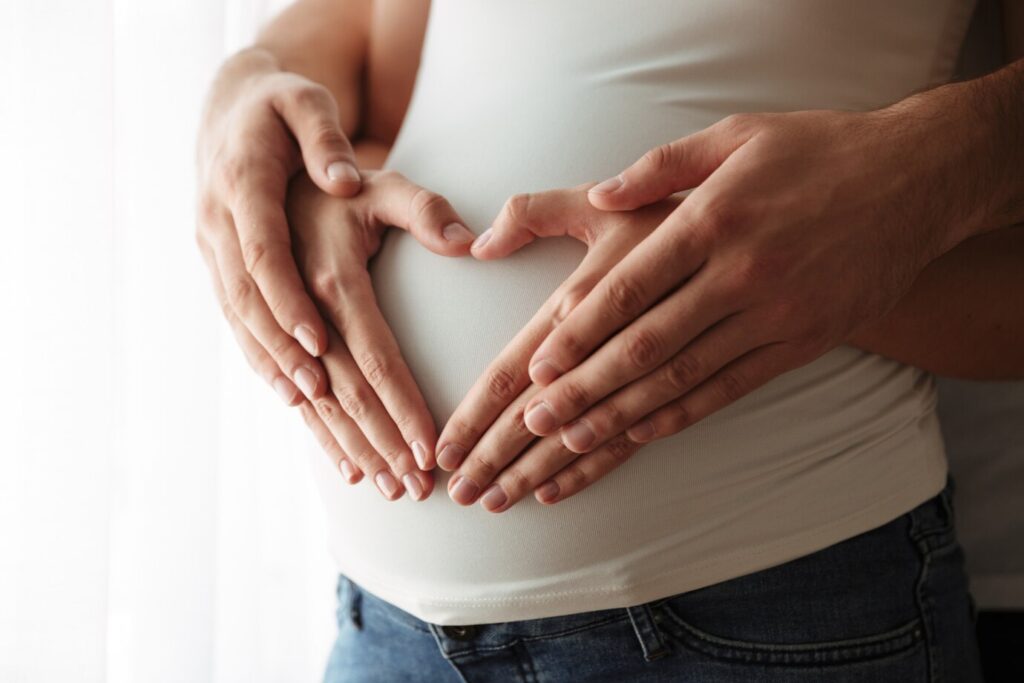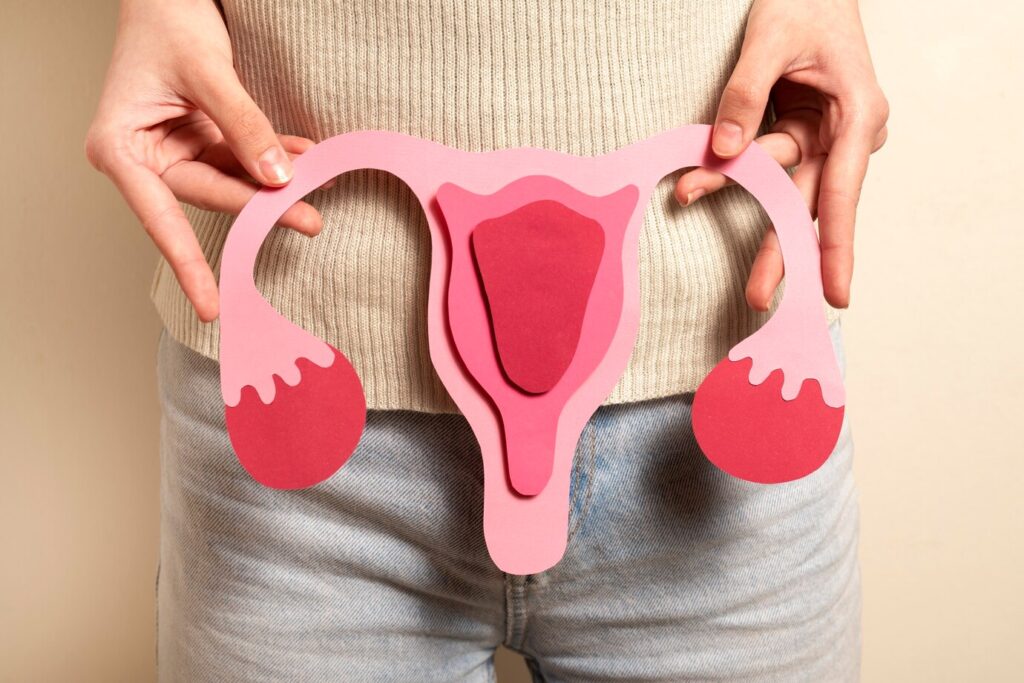Hysterectomy
- Home
- Hysterectomy
Comprehensive Care for Women's Health
by Dr. Shruti Sharma
A hysterectomy is a major surgery that involves the removal of the uterus and, in some cases, other reproductive organs. Depending on the type of surgery and the patient’s condition, a hysterectomy can be performed through different methods—abdominal, vaginal, laparoscopic, or NDVH (No-Incision Hysterectomy). At Dr. Shruti Sharma’s clinic in Karnal (India), we offer expert care for all types of hysterectomy procedures, ensuring the best outcomes through personalized treatment plans and advanced surgical techniques. From initial consultation to post-operative care, our dedicated team is here to guide you through every step of the journey. We prioritize patient comfort and safety, ensuring a smooth recovery process with continuous support and monitoring. Our goal is to provide the highest standard of care to improve your health and well-being.

Why Is a Hysterectomy Performed?
A hysterectomy may be required for several gynecological conditions. One of the primary reasons is cancer, including uterine, cervical, or ovarian cancer, which often necessitates the removal of the uterus and surrounding organs to prevent the spread of the disease. Another common reason for a hysterectomy is the presence of large or symptomatic fibroids that cause heavy bleeding or pelvic pain. Additionally, women with severe cases of endometriosis, where tissue grows outside the uterus and doesn’t respond to other treatments, may need this surgery. Uterine prolapse, where the uterus drops into the vagina and causes discomfort or incontinence, can also be treated with a hysterectomy. Lastly, when menstrual bleeding becomes uncontrollable and other methods fail, a hysterectomy may be the best solution to manage excessive bleeding.
Types of Hysterectomy Procedures
Abdominal Hysterectomy
An abdominal hysterectomy involves the removal of the uterus through an incision made in the lower abdomen. This approach is commonly used for conditions like uterine fibroids, cancer, endometriosis, and severe pelvic pain. Depending on the condition, the cervix, ovaries, and fallopian tubes may also be removed. The surgery typically takes 1 to 2 hours and requires a hospital stay of 1 to 2 days, followed by a recovery period of several weeks.
Laparoscopic Hysterectomy
Laparoscopic hysterectomy, also known as minimally invasive or “keyhole” surgery, involves the removal of the uterus through small incisions made in the abdomen. A tiny camera (laparoscope) and specialized instruments are used to remove the uterus. This procedure offers several benefits, including smaller incisions, reduced scarring, shorter hospital stays, and a faster recovery period. It is often used for patients with conditions like fibroids or endometriosis.
Vaginal Hysterectomy
In a vaginal hysterectomy, the uterus is removed through the vagina. This approach is often recommended when there are no large fibroids or other complications. It is minimally invasive, typically resulting in a quicker recovery time compared to an abdominal hysterectomy. Vaginal hysterectomy is often the preferred option for treating uterine prolapse, fibroids, or abnormal bleeding.
NDVH (No-Incision Hysterectomy)
No-Incision Hysterectomy, also known as NDVH, is a groundbreaking technique where the uterus is removed without external incisions. This method is performed using advanced technology entirely through the vaginal route. NDVH offers minimal discomfort, faster recovery time, and reduced risk of complications, making it an excellent option for women who meet the criteria for the procedure.
What to Expect During the Procedure
Before the surgery, you’ll undergo various diagnostic tests, including blood tests, Pap tests, ultrasounds, or MRIs, to confirm the need for a hysterectomy. The surgery itself can last 1 to 3 hours, depending on the type of hysterectomy and the complexity of the procedure. General anesthesia is administered to ensure you’re comfortable during the surgery.
Depending on the surgical method, your surgeon will make either an abdominal incision (for abdominal hysterectomy), use a vaginal approach (for vaginal hysterectomy), perform small incisions for laparoscopic surgery, or use advanced technology for a no-incision procedure (NDVH). After the procedure, you’ll be closely monitored for complications and provided with pain management.
Life After a Hysterectomy
- No More Periods: After any type of hysterectomy, you will no longer have menstrual cycles.
- Impact on Fertility: A hysterectomy eliminates the ability to conceive since the uterus is removed.
- Potential for Early Menopause: If the ovaries are also removed, you may experience menopause symptoms sooner than expected.
- Sexual Health: Most women can continue to have a satisfying sex life post-hysterectomy. In some cases, relief from prior symptoms can even improve sexual pleasure.

Recovery After Surgery
Recovery time varies based on the type of hysterectomy performed:
- Abdominal Hysterectomy: Recovery usually takes 6 to 8 weeks. Hospital stay is around 1 to 2 days, and you’ll need to avoid heavy lifting and strenuous activities during this time.
- Vaginal and Laparoscopic Hysterectomy: These surgeries have a quicker recovery time, typically around 3 to 4 weeks. Hospital stay may be 1 to 2 days, and you’ll need to follow specific aftercare instructions.
- NDVH: With no external incisions, the recovery time is usually the shortest, often around 2 to 3 weeks.
During recovery, you’ll be guided on activities to avoid and steps to promote healing, such as refraining from heavy lifting and avoiding strenuous physical activity for several weeks.
FAQ: Hysterectomy Procedures
Hysterectomy may be necessary for cancer, fibroids, endometriosis, uterine prolapse, chronic pelvic pain, or heavy bleeding.
The procedure typically takes 1 to 3 hours, depending on the type and complexity.
You will receive general anesthesia. The surgeon will remove the uterus using the appropriate method—abdominal, vaginal, laparoscopic, or NDVH.
Recovery varies: abdominal hysterectomy takes around 6-8 weeks; vaginal and laparoscopic take about 3-4 weeks; NDVH recovery can be as quick as 2-3 weeks.
No, after a hysterectomy, you will no longer be able to get pregnant.
Hysterectomy can provide relief from chronic pain, heavy bleeding, and other symptoms, improving the overall quality of life and resolving underlying health issues.
Our Latest Blog
5 Common Myths About Birth Control—Debunked
When it comes to birth control, there’s a lot of confusion…
Pregnancy Care: Essential Tips for Expecting Mothers
Pregnancy is a beautiful and life-changing journey. It’s a time filled…
PCOS and You: Tips for Managing Symptoms and Living Healthily
Polycystic Ovary Syndrome, or PCOS, is a common hormonal disorder that…



